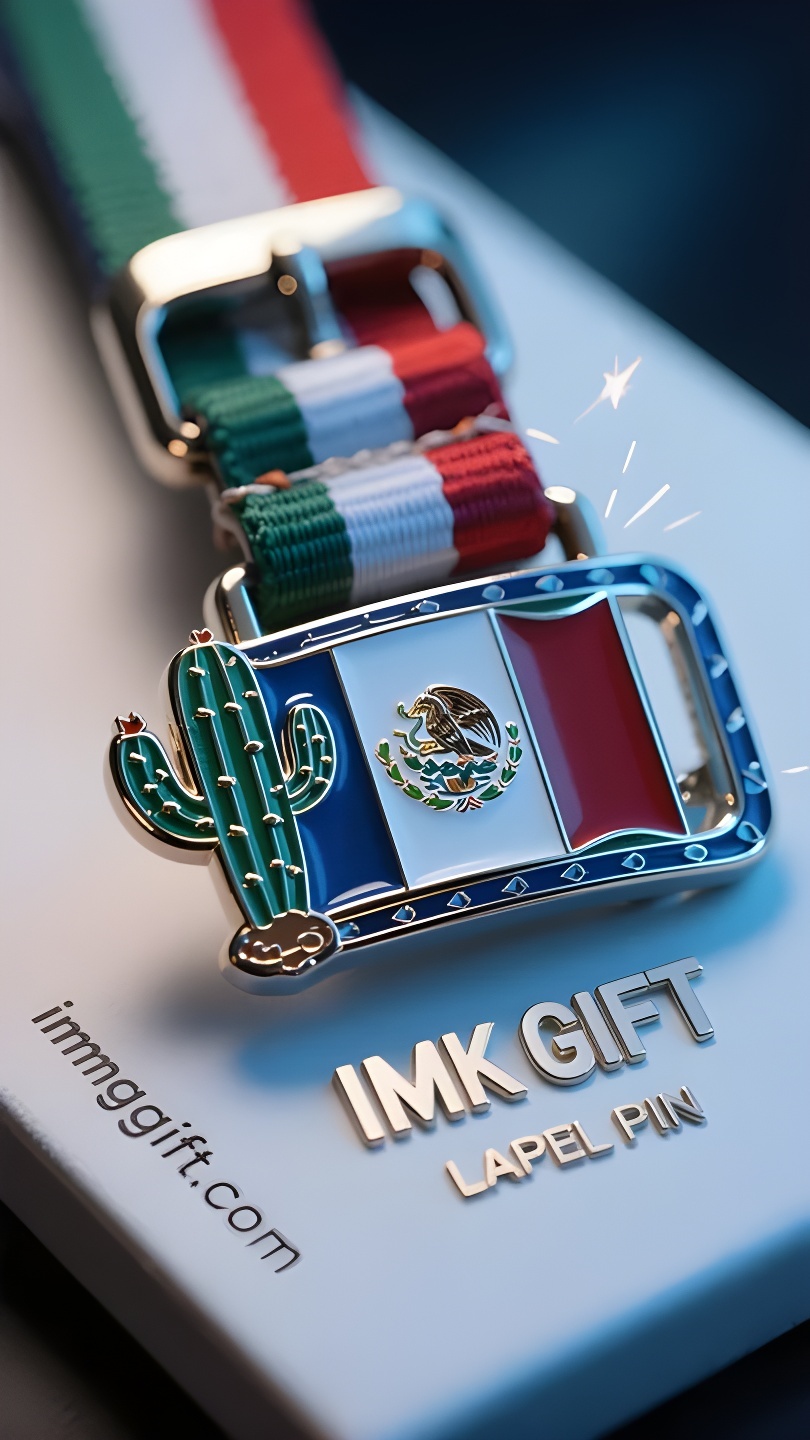in998-La-columna-vertebral-del-cactus-Medalla-de-la-Nación
▼
En México, en septiembre, el resplandor del carnaval del Día de la Independencia aún no se ha desvanecido y las banderas nacionales rojas, blancas y verdes aún ondean en las calles. En esta bandera que lleva la leyenda azteca, el tótem de un águila picoteando una serpiente parada entre cactus es como la hebilla del cinturón de cactus en el pecho de cada mexicano: no es sólo una coordenada espiritual en el largo río de la historia, sino también una filosofía de supervivencia en la adversidad contemporánea. El cactus en el centro de la bandera mexicana proviene de una antigua fábula sobre la búsqueda de los aztecas de un lugar para construir una ciudad: cuando los nómadas vieron un águila con una serpiente en su boca parada sobre un cactus, supieron que esa era la tierra prometida dada por Dios. Esta planta, que puede brotar de la vida incluso en las grietas estériles de las rocas, ahora ha sido transformada en hebillas de cinturón hechas a martillo por plateros. Sus afiladas espinas resaltan contra el sol abrasador y la arena, y se ha convertido en un tótem espiritual que los mexicanos llevan consigo. En las cinturas de los mineros del Altiplano de Chiapas y en los cinturones de los pescadores de las playas de Cancún, estos adornos de cactus que brillan con una fría luz plateada hablan silenciosamente de la resiliencia de la nación de “echar raíces en el suelo más duro y florecer bajo el sol más caliente”. Mientras las tormentas de arena modernas barren el mundo, los mexicanos, al tocar las hebillas de cactus de sus cinturones en el pecho, recuerdan la sabiduría de sus antepasados al construir jardines en islas flotantes en el pantano de Tenochtitlan. Así como un cactus almacena agua en sus gruesos tallos para sobrevivir a la estación seca, esta nación que ha experimentado colonización, revolución y terremotos siempre ha sabido transformar el sufrimiento en nutrientes para el futuro. Cada hebilla de cinturón con forma de cactus erguido es una declaración de supervivencia grabada en los genes nacionales: una persona verdaderamente fuerte nunca necesita un suelo blando y fértil.
In September, Mexico is still celebrating the Independence Day, and the red, white and green national flags are still flying on the streets. On this flag carrying the Aztec legend, the totem of an eagle pecking a snake standing in a cactus bush is just like the cactus belt buckle on the chest of every Mexican – it is not only a spiritual coordinate in the long river of history, but also a philosophy of survival in contemporary adversity. The cactus in the center of the Mexican flag originated from the ancient fable of the Aztecs looking for a place to build a city: when the nomads saw an eagle holding a snake standing on a cactus, they knew that this was the promised land given by God. This plant, which can also burst into life in barren rock cracks, has now become a belt buckle hammered by silversmiths, with sharp thorns to resist the scorching sun and sand, and has become a spiritual totem that Mexicans carry with them. On the waists of miners on the Chiapas Plateau and on the belts of fishermen on the Cancun Beach, these cactus ornaments shining with cold silver light silently tell the national resilience of “taking root in the hardest land and blooming in the hottest sun.” When modern sandstorms sweep the world, Mexicans touch the cactus belt buckles on their chests, always remembering the wisdom of their ancestors in building floating island gardens in the Tenochtitlan Swamp. Just as cacti store water in their thick stems to survive the dry season, this nation that has experienced colonization, revolution and earthquakes has always known how to transform suffering into nutrients for the future. Each upright cactus belt buckle is a declaration of survival engraved in the genes of the nation: the truly strong never need soft fertile soil.
九月的墨西哥,独立日的狂欢余韵未散,街道上仍飘荡着红白绿三色国旗。这面承载着阿兹特克传说的旗帜上,雄鹰啄蛇立于仙人掌丛中的图腾,恰如每个墨西哥人胸前的仙人掌皮带扣——既是历史长河里的精神坐标,更是当代逆境中的生存哲学。
墨西哥国旗中央的仙人掌,源于阿兹特克人寻找建城之地的古老寓言:当游牧民族看见雄鹰衔蛇立于仙人掌时,便知此处是神赐的应许之地。这种在贫瘠岩缝中也能迸发生命的植物,如今化作银匠锤打的皮带扣,以尖锐利刺对抗烈日风沙的造型,成为墨西哥人随身佩戴的精神图腾。在恰帕斯高原的矿工腰间,在坎昆海滩的渔民皮带上,这些闪着冷冽银光的仙人掌饰品,无声诉说着”在最坚硬的土地扎根,在最灼热的阳光里开花”的民族韧性。
当现代社会的沙尘暴席卷全球,墨西哥人抚摸胸前的仙人掌皮带扣,总能想起祖先在特诺奇蒂特兰沼泽建造浮岛花园的智慧。正如仙人掌将水分储存在肥厚茎干中以度旱季,这个经历过殖民、革命与地震的民族,始终懂得将苦难转化为滋养未来的养分。每个挺立的仙人掌皮带扣,都是刻在民族基因里的生存宣言:真正的强者,从不需要柔软的沃土。
▼
Contact Us
📞 Tel: +0086-760-85286839
📧 Email: sales3@imkgift.com








